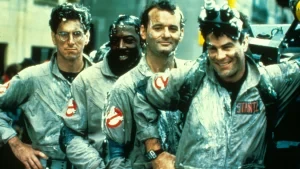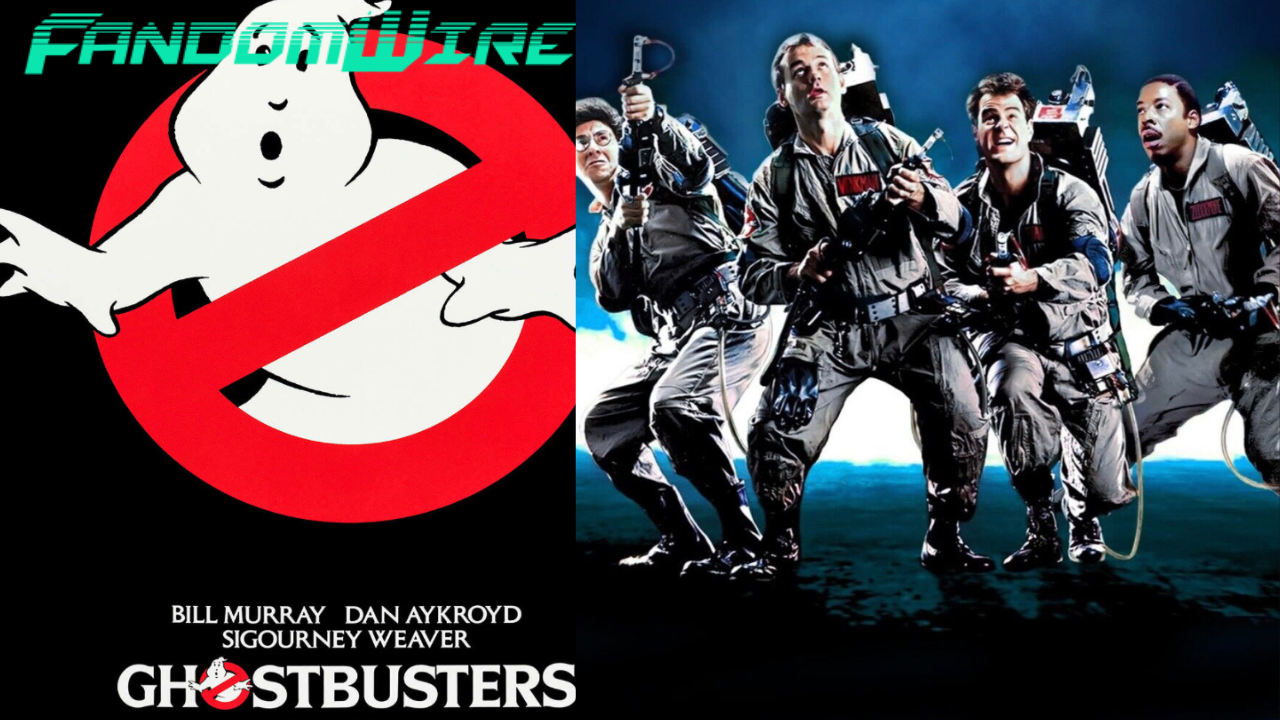Fittingly enough given its subject matter, the Ghostbusters franchise can’t seem to stop haunting audiences no matter how many times it seems like and turns out to be a futile effort. Ghostbusters II is a lazy retread incited by one of the dumbest retcons in movie history, the 2016 reboot was bombarded by misogynistic online harassment before it ever got a proper shot, and Ghostbusters: Afterlife seemed to be under the delusion that the working class schmoes from the original were actually Jedi.
Yet despite all this, the attempts keep being made and Afterlife was enough of a box office success to warrant a follow-up in Ghostbusters: Frozen Empire; set to hit theaters this coming weekend. And while the stacked cast of new and returning actors alongside the inspiration from The Real Ghostbusters animated series for its villains do make Frozen Empire feel like more of a substantial leap forward, I still can’t help but wonder…… “Why are we still making these?”
But the answer to that goes back to that original 1984 film. Its massive critical and commercial success, its huge cultural impact, and everything in between. But after three underwhelming successors (four if you count the 2009 video game), does the original Ghostbusters still work as a film? Do the characters and story and, perhaps most importantly, the comedy, still hold up 40 years after its initial release? Well, let’s find out.
Also Read: Why The Exorcist (1973) Is Still One of the Scariest Films Ever Made
Ghostbusters (1984) Plot

After a New York City librarian is scared by what could only be described as an actual ghost, three paranormal researchers, Peter Venkman, Ray Stantz, and Egon Spengler, (Played by Bill Murray, Dan Aykroyd, and Harold Ramis respectively) are called into investigate……… only to have no idea how to deal with a ghost before subsequently being fired from Columbia University.
Having been inspired by their recent encounter, the trio use an influx of petty cash from Stantz’s third mortgage (Because that was a thing you could do in the 1980s without immediately going into crippling debt) to start a ghost-hunting business called the Ghostbusters that quickly becomes a huge success and national phenomenon with appearances on popular talk shows and the addition of a fourth member in Ernie Hudson’s Winston Zeddemore.
However, trouble begins brewing for the team when EPA agent Walter Peck shuts off their ghost containment unit, unleashing an army of ghosts onto New York; while at the same time, one of their clients, Sigourney Weaver’s Dana Barrett, and her neighbor Lewis Tully, played by Rick Moranis, are possessed by the minions of an ancient Sumerian god named Gozer.
Gozer is soon unleashed upon New York, taking the form of the Stay Puft Marshmallow Man due to a stray thought from Ray, and the team is only able to defeat them by crossing the streams of their proton pack, initiating total protonic reversal and thankfully not blowing everything up as was previously predicted. Lewis and Dana are returned to normal and the Ghostbusters are celebrated as heroes as the iconic Ray Parker Jr. theme song closes out the story.
Why Ghostbusters Still Holds Up

For me, what makes the original Ghostbusters such a great comedy is that our main heroes don’t fit our typical genre hero mold. They’re not buff, they don’t have magic or other superpowers, their technology isn’t especially sleek or optimized, they aren’t the leaders of a revolution or The Chosen Ones or anything like that. They’re working class people running a business.
It’s what makes them so charming in the first place. None of them have any particular grasp on how to do this and more or less just making it up as they go along because that’s how most of the audience would go about it. Sure, the above-average intelligence and ghost-catching gear does help, but aside from the fantastical origin, the tech used by the Ghostbusters isn’t all that different from the stuff used by real-world exterminators like they claim to be at the hotel scene.
The juxtaposition of the mundane blue-collar working class struggle with the supernatural elements of the ghost world give the comedy a strong central through-line; on top of Aykroyd and the late Harold Ramis’ excellent screenplay and the improvisational skills of an ensemble cast largely taken from the hey-day of Saturday Night Live.
And this is without even getting into the excellent effects work in the film. The handheld tactile props used for the ghost traps and proton packs look and feel like real working tech. And the combination of puppetry, stop-motion, and rotoscoping used for the ghosts themselves still look great today; with the differing effects styles helping add to the otherworldly feel.
The one thing that hasn’t especially aged with grace is Peter Venkman’s treatment of women, especially Dana. To be fair, the film does acknowledge most, though not all, of his behavior as creepy, but he never gets any level of comeuppance for it which can make trying to laugh at Bill Murray’s still very much charming performance feel uncomfortable.
Regardless, Ghostbusters was and is a fantastic comedy because it recognizes and has a ton of fun combining the fantastical with the mundane. It allows its heroes to defy convention and be regular working class individuals and that, combined with the incredible comedic talent both behind and in front of the camera, make the whole thing work. Now if only the new films could understand that instead of turning these into suburban flavored Star Wars sequels.
Follow us on Facebook, Twitter, Instagram, and YouTube for more entertainment coverage.

